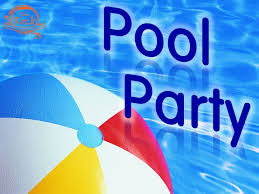Should You Wait an Hour After Eating to Swim? No, you shouldn’t.
That’s the short answer. The long answer addresses the origins, medical evidence, and statistical realities of the long-standing myth that has kept millions of children in idle despair after a poolside lunch, helplessly watching their friends splash away while they remain sad, dry prisoners of superstition.
It’s time to debunk the swimming after eating myth.
The first-known mention of the myth comes from an early 20th century scouting manual, which sternly warns would-be swimmers of their certain (and well-deserved) death by cramping:
“If you bathe within an hour and a half after taking a meal, that is, before your food is digested, you are very likely to get cramp. Cramp doubles you up in extreme pain so that you cannot move your arms or legs – and down you go. You may drown – and it will be your own fault.”
Ever since, moms across the world have steadfastly refused to let youth anywhere near the water until they were certain that digestion had taken its course. Who can blame them? Death by PB&J is an ignoble one, especially if it’s preventable.
But like many parents’ hysterical habits, this one just isn’t necessary. It doesn’t protect children, except from fun. It also instills in them the most regrettable characteristic of Generation Coddle, a complete and paralyzing aversion to life, for fear it might harm them.
The assumption behind the myth rests on an ill-conceived understanding of how cramping works. The basic idea is that your body doesn’t have enough blood to both aid your stomach in digestion and keep your swimming muscles functioning at the same time. If you try to digest and swim simultaneously, the story goes, either your stomach muscles or your limbs will be deprived of blood, and therefore oxygen, and so the cramping begins.
This is hooey for three reasons. First, there is no medical proof of this hypothesis. It’s at best debatable that your stomach and the rest of your body are competing for blood when you swim after a meal.
Second, even if we assume there isn’t enough blood to go around, and a cramp does ensue … that kind of cramp won’t drown you. Most cramps, except for those caused by extreme exhaustion and overuse, are easily resolved by flexing and relaxing the muscle. Even if the cramp is stubborn, human beings are pretty naturally buoyant, and any swimmer with the most basic survival instincts can keep their head above water while the situation is resolved. That includes children, especially children in a pool of limited size, and most especially supervised children in a pool of limited size.
Third, and most importantly, there is not a single case of drowning by post-meal cramps on record. Not in the whole world, not in all of human history. If this problem was real, the statistics would bear it out, or at the very least mention it at least once.
So, there you have it. Toss this one into the same bin as medical leeching or the idea that Columbus was trying to prove the world was round. “Myth Busted,” as the television guys say.
The legend of the post-lunch drowning is, like all the imperfect beliefs of the past, something to be discarded by adults and not inflicted on the next generation.
Thanks to Apsp for the great blog content! For more information please visit Blog.apsp.org















